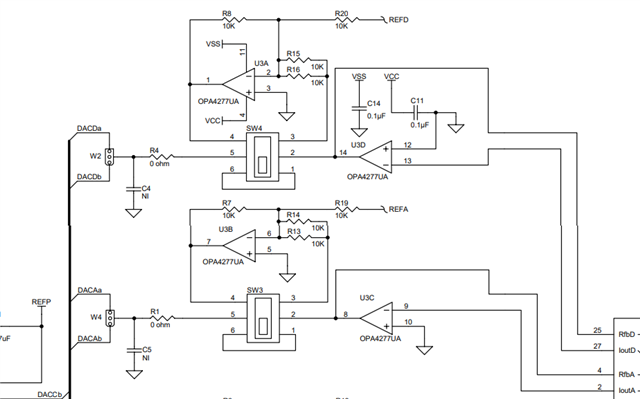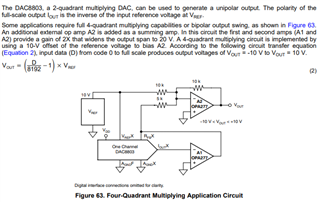Other Parts Discussed in Thread: TIPD159, , , OPA192
Hello,
From my understanding, the DAC8803 is a multiplying DAC and needs an opamp to get the voltage output. After studying the DAC8803/14 EVM user guide and schematic, and the TIPD159 application note- "creates a unipolar voltage output from 0 V to 2.5 V. This design does not require dual supplies to realize a unipolar, positive output voltage as with typical MDAC circuits." I would like to know which application would be better for the settling time.
Also, from the DAC8803/14EVM user guide, which of the opamps(U3B/U3C) in this schematic is for a unipolar application and is the analog voltage directly at the output of the opamp?

And if i were to use the TIPD159 method, is the OPA4227UA opamp still a good choice for the application?
Many thanks!




